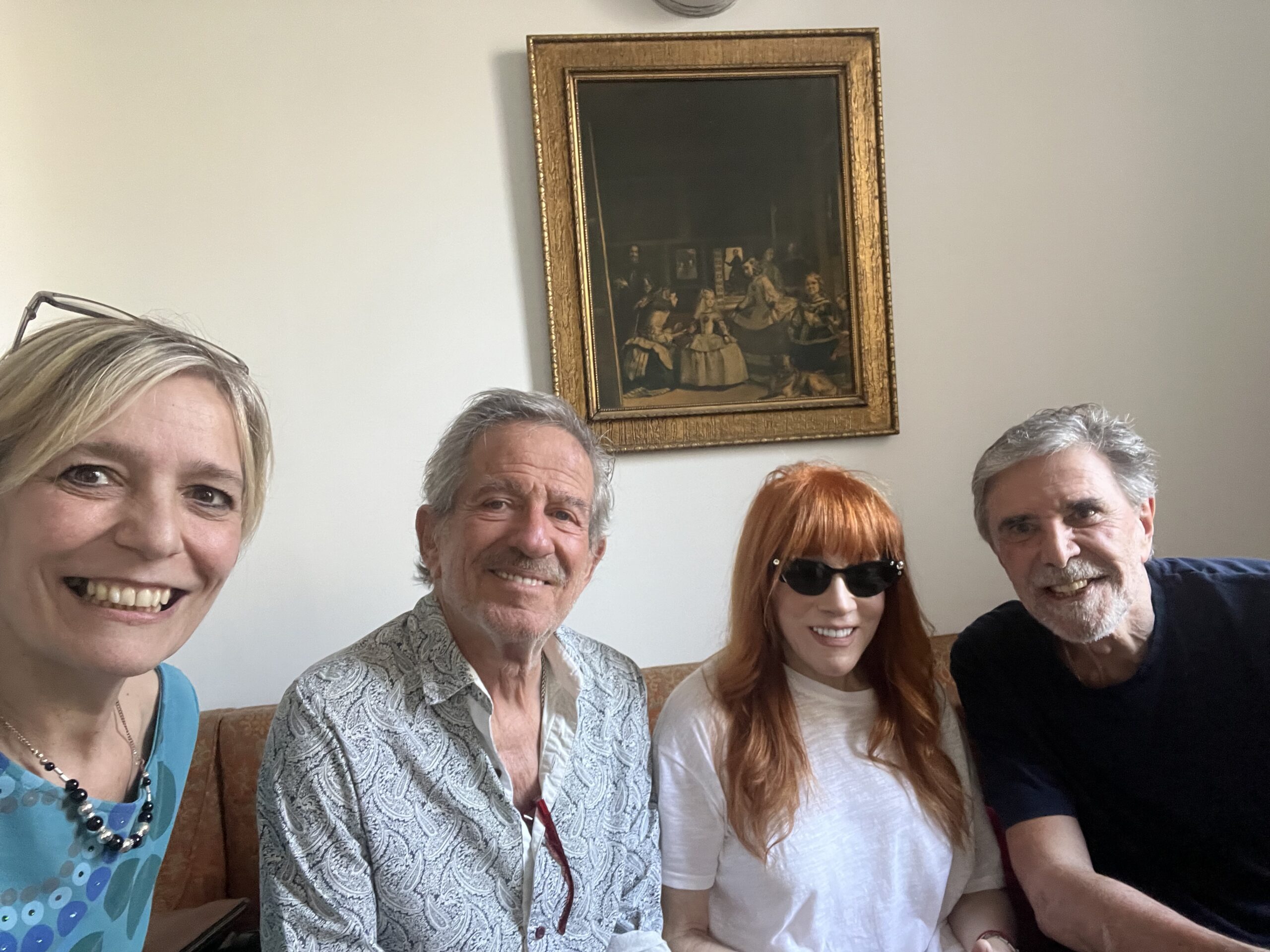
When do you use ‘ser’ and ‘estar’? – Easy Learning Grammar Spanish
In Spanish there are two irregular verbs, ser and estar, that both mean to be, although they are used very differently. In the present simple tense, they follow the patterns shown below.


To be or to be. That is the question. In this post, we explain the difference between the two Spanish verbs for “to be” – Ser vs Estar. People get confused by these a lot, and there’s really no reason to be.
What is the difference between Ser and Estar?
There are two verbs that mean “to be” in Spanish, ser and estar.
- Ser is used in a simple way, to talk about WHAT something is (permanent state). To describe characteristics that are an essential part of the thing we’re talking about.
- Estar is used to talk about HOW something is, so we use it for conditions, locations, emotions, and actions (temporary states).
In a little more detail…

Uses of Ser
More specifically, Ser is used for these situations:
- The hour, day, and date.
- Place of origin.
- Occupation.
- Nationality.
- Religious or political affiliation.
- The material something is made of.
- Possession.
- Relationship of one person to another.
- Where an event is taking place.
- Essential qualities (what makes this thing, this thing?).
Uses of Estar
On the other hand, Estar is used for:
- Geographic or physical location.
- State or condition (like emotions).
- Many idiomatic expressions.
- Progressive tenses (-ing).

Unsure what to learn next?
Download the exact curriculum that thousands of BaseLang students have used to become fluent in Spanish.
Ser vs Estar: A Mountain of Examples
Ultimately, the best way to understand the difference between Ser and Estar is to see a TON of example situations and which verb to use.
So we present to you just that: a mountain of detailed examples.
Situation 1: Talking about a person
SER
María is a happy person.
María es una persona muy alegre.
Being happy is a part of María’s personality, so it’s a constant, is part of WHAT María is, so we use ser.
ESTAR
María is in a good mood.
María está de buen humor.
One’s mood always changes throughout the day, and we experience different emotions in one day, so, we use Estar because we are talking about a condition.
Situation 2: Talking about the location of an event
SER
The soccer game is in the Stadium.
El juego de fútbol es en el estadio.
Here we are referring to where the event is taking place.
ESTAR
The Stadium is downtown.
El estadio está en el centro de la ciudad.
Here we are referring to the physical location of the stadium (which sounds permanent, but we use Estar for locations).
Situation 3: Describing a relationship between two people
SER
Carlos and Gabriela are spouses.
Carlos y Gabriela son esposos.
In this case, we are describing their relationship to each other.
ESTAR
Carlos and Gabriela are married.
Carlos y Gabriela están casados.
Here, we talk about their marital status, which is a condition or a state.
Situation 4: Describing appearance
SER
She is very pretty.
Ella es muy bonita.
I am giving the subject a permanent characteristic.
ESTAR
She is very beautiful tonight.
Ella está muy hermosa esta noche.
I am giving the subject a non-permanent characteristic. Maybe she’s not usually this pretty 🙁

Situation 5: Location
SER
We are from NYC.
Nosotros somos de NYC.
I am giving the subject an origin (permanent).
ESTAR
We are on a journey to Australia.
Nosotros estamos en un viaje por Australia.
I am giving the subject a current location (non permanent).
Situation 6: Marital status
SER
She is a mother.
Ella es una madre.
I am giving the subject a permanent characteristic.
ESTAR
She is married.
Ella está casada.
I am giving the subject a non permanent characteristic (hopefully it is though!).
Situation 7: Talking about fruits
SER
The apple is green. (color of the fruit)
La manzana es verde.
Here we give a characteristic of the fruit. It’s not green just for a moment, that’s part of what it is.
ESTAR
The apple is green. (it’s not ripe)
La manzana está verde.
The apple is only temporarily green in this case, because it’s not ripe.
Situation 8: Locality and nationality
SER
I am from Colombia.
Yo soy de Colombia.
We are talking about a characteristic, where I am from. The country or nationality.
ESTAR
I am in Spain.
Yo estoy en España.
We are talking about a condition. I am in a place (country) at the current moment.
Situation 9: Food.
SER
The soup is tasty at that restaurant.
En ese restaurante la sopa es muy sabrosa.
We are giving a characteristic to the soup from that restaurant specifically.
ESTAR
The soup is cold.
La sopa está fría.
We are talking about the state of the soup, which in this case is cold.
Situation 10: Describing people using temperature words.
SER
She is cold. (Her personality)
Ella es fría.
In this case when you use the verb SER and the adjective COLD the sentence takes a figurative connotation meaning that she has a cold personality, without feelings.
ESTAR
She is cold. (Her body temperature)
Ella está fría.
In this case when you use verb ESTAR and the adjective COLD the sentence takes the literal meaning of the word cold related to very low temperature. Her body is cold.
Situation 11: Talking about dead people.
SER
Santiago is a dead man.
Santiago es hombre muerto.
Somebody very dangerous has threatened Santiago’s life. He’s not actually dead yet but probably he will be soon. In this case you should use SER, and the complement “hombre muerto”
ESTAR
John Lennon is dead.
John Lennon está muerto.
We have learnt that SER is used for permanent situations and ESTAR for transitory situations, that is generally the rule. But rules usually have exceptions and this one of those. Being dead is a permanent state. But the right verb to use is ESTAR. You cannot say “John Lennon es muerto”
Situation 12: Talking about being young.
SER
My grandpa is young, he’s only 45.
Mi abuelo es joven, apenas tiene 45 años.
In this case you use verb SER when you want to say that the person is actually young.
ESTAR
My grandfather is young for his age.
Mi abuelo está joven para su edad.
In this case you use ESTAR when you want to say that the person looks younger than his/her age.
Situation 13: Exercises.
SER
Renata is a very athletic person.
Renata es una persona muy deportiva.
This is part of who Renata is as a person, not a temporary state, so we use SER.
ESTAR
Renata is very tired of doing exercises.
Renata está muy cansada de hacer ejercicio.
In this example we are talking about what Renata feels about what she is doing or what she was doing.
Situation 14: Talking about Paula.
SER
Paula is beautiful.
Paula es hermosa.
In this example we’re talking only about Paula’s permanent beauty.
ESTAR
Paula is beautiful today.
Paula está hermosa hoy.
In this example we talk about describing in a particular moment in Paula’s beauty.
Situation 15: Places.
SER
Edward is from Venezuela.
Edward es de Venezuela.
Edward is from Venezuela, meaning that’s a permanent part of who he is.
ESTAR
Edward is in Barcelona.
Edward está en Barcelona.
Edward is in Barcelona right now, but he won’t always be. It’s not part of him.
Situation 16: To identify a person.
SER
Who is the teacher?
¿Quién es la profesora?
We are asking about a person’s profession, when we use Ser, as it’s considered a part of who they are.
ESTAR
Where is the teacher?
¿Dónde está la profesora?
This is the standard way to ask where someone is (which is temporary).
Situation 17: Permanent or temporary states of an object.
SER
The ice is cold.
El hielo es frío.
The ice is always cold because if it weren’t cold, it wouldn’t be ice. Coldness is part of what it is.
ESTAR
The water is cold.
El agua está fría.
In the case of the water it depends if it is on the fridge or under the sun. The state can change, it is temporary.
Situation 18: To describe an object.
SER
The seatbelts are important.
Los cinturones de seguridad son importantes.
This is stating a quality of the seatbelt: that it’s important. It’s never not important, so this is a characteristic of the seatbelt and thus we use SER.
ESTAR
The seatbelts are in the car.
Los cinturones de seguridad están en el carro.
Here we’re talking about where the seatbelt is. We use ESTAR for locations.
Situation 19: Permanent state regarding a profession and a place of work.
SER
I am an astronaut.
Soy un astronauta.
We use SER for professions because they are considered a “part of” who the person is.
ESTAR
I am in space.
Estoy en el espacio.
In this case, we’re talking about where the astronaut is at that time.
Situation 20: Talking about a place or a specific characteristic.
SER
I am a sleepy person.
Yo soy una persona dormilona.
Here we are talking about a permanent characteristic of the person, so we use SER.
ESTAR
I am in bed.
Estoy en cama.
Again, locations always use SER. You’re not always in bed.
Situation 21: Using attributes or adjectives and status
SER
The apple is red.
La manzana es roja.
The adjective is used to point out a specific feature about something that makes it unique or stand out from the rest.
ESTAR
The apple is ripe.
La manzana está madura.
Here, we use the verb “estar” to indicate the status of something.
Situation 22: Permanent or temporary state of being.
SER
I am a happy person.
Yo soy una persona feliz.
This is a permanent state of being. Part of someone’s personality. It is just the way that person is most of the time.
ESTAR
I am happy.
Yo estoy feliz.
This is a specific mood for a shorter period of time. It is temporary, so the state of happiness could change anytime.
Situation 23: Watching the soccer game.
SER
This team is very good.
Este equipo es muy bueno.
We have to use this verb to explain the quality of the team in the sentence.
ESTAR
I am watching the soccer game at the stadium.
Yo estoy viendo el juego de fútbol en el estadio.
It’s referring to an action that is developing in one place, at a determined time, it’s temporary.
Situation 24: The boys are eating.
SER
It is pizza what they are having now.
Es pizza lo que ellos comen ahora.
Here we’re explaining what kind of food is it.
ESTAR
They are having pizza in the park.
Ellos están comiendo pizza en el parque.
Here we’re explaining what they are doing. We always use ESTAR for “-ing” situations.
Situation 25: At a party.
SER
This is a retro party.
Esta fiesta es retro.
We have to use SER to describe what kind party it is.
ESTAR
This party is really fun.
Esta fiesta está realmente divertida.
We have to use ESTAR to describe the moment.
Situation 26: Talking about your mother.
SER
She is my mom.
Ella es mi madre.
Shows a mom and son or daughter relationship and this relationship won’t change in time.
ESTAR
My mom is sad.
Mi mamá está triste.
Shows the mood that the mom is right now.
Situation 27: Talking about Javier.
SER
Javier is catholic.
Javier es católico.
Shows Javier’s religious beliefs.
ESTAR
Javier is at the church.
Javier está en la iglesia.
ESTAR is for locations. I hope you’ve got this by now!
Situation 28: Colombia.
SER
Colombia is a big country.
Colombia es un país grande.
Here we are talking about an un-changing characteristic of Colombia. It’s not going to change sizes anytime soon.
ESTAR
Colombia is progressing.
Colombia está progresando.
Here we are talking about the current state of the country.
Situation 29: The restaurant.
SER
He is a waiter.
Él es mesero.
We use SER because is a characteristic of the person.
ESTAR
The waiter is writing the order.
El mesonero está escribiendo la orden.
Here we’re referring to an action in progress.
Situation 30: Talking about his girlfriend.
SER
She is a fighter.
Ella es peleona.
We use SER because is a characteristic of the person. It’s something that can’t change easily.
ESTAR
My girlfriend is fighting with me.
Mi novia está peleando conmigo.
We use ESTAR in the second sentence because the situation can change in a moment, it’s not something that will be happing forever.





Una opinión sobre “A Guide to the Differences Between the Spanish Verbs Ser and Estar by Prof. MMag. Karin Silvina Hiebaum”
Los comentarios están cerrados.